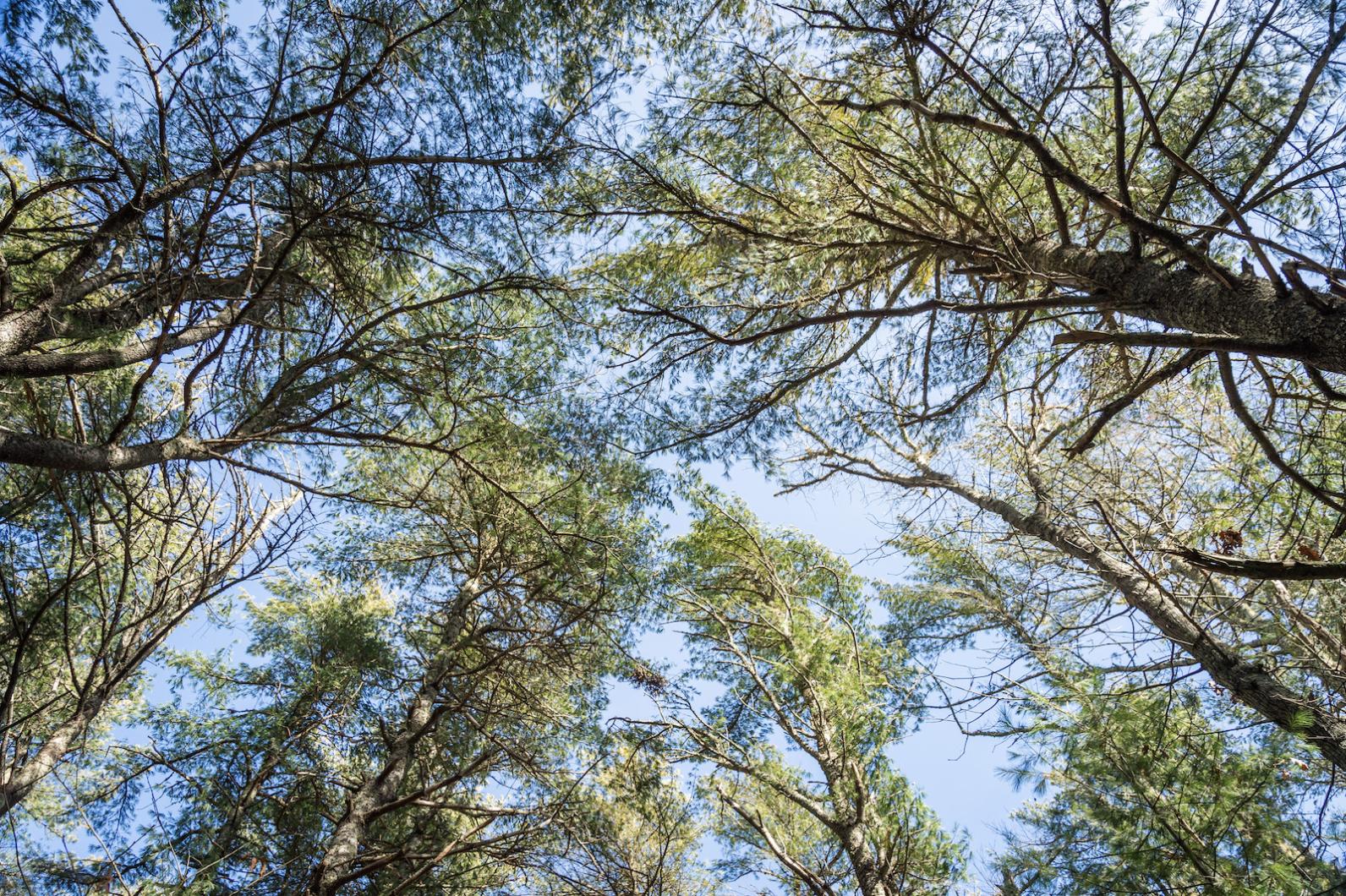A plan to cut 175 acres of white pine in the Manuel F. Correllus State Forest drew significant opposition — along with some support — from the Island community during a recent public comment period, according to a review of more than 100 comments obtained by the Gazette.
The Department of Conservation and Recreation (DCR) has proposed chopping non-native white pines in order to reduce fire risk and preserve the forest’s biodiversity. While the project has the support of a Martha’s Vineyard Commission task force composed of Vineyard ecologists, firefighters and other experts, community members who submitted comments questioned the need and urged the state to slow down.
The Massachusetts Department of Conservation and Recreation, which manages the 5,300-acre forest in the Island’s center, collected written public comment from March 12 to 26, following an informational meeting hosted by the MVC’s state forest task force on March 12.
Most comments said the white pines play an important roll in keeping the forest lush and peaceful for year-round activities such as hiking and biking. Out of 123 respondents, more than 90 were opposed to the cutting. Most of the comments were anonymous.
“Please do not rush into this decision,” wrote Anna Fitch, a resident of West Tisbury. “I realize things have already been put in motion to do this clear cut, but based on the science and my personal experience with the forest, I believe it is clear that there is a better way to move forward than cutting it all down.”
The plan to cut the pines was initially proposed in 2022 and picked up steam this past fall. DCR is required to remove 175 acres of pines within the forest to help restore the habitat for native trees under a requirement from a 2001 permit in which DCR expanded its fire breaks.
DCR plans to initially concentrate on 79 acres of two separate white pine plantations in the southeast corner of the forest. The state said it would not be a clear-cut, and it would target the removal of select white pines.
One of the plantations is a dense 32-acre white pine stand that would be cut in four 3-acre patches. The patches would be monitored post-harvest and the results would inform whether or not the state removes the remaining 20 acres of the stand.
The other is a 47-acre stand with white pines and other native species such as scrub oak, blueberry bushes and other shrubs. DCR said it would only remove the non-native white pines, and cuttings could cost anywhere from $3,000 to $6,000 per acre.
Proponents have said that the white pines were planted on the Island in the early 1900s as an attempt to start an Island lumber industry. The industry petered out and the trees that were meant to be cut have since taken over, choking out native species.
The Vineyard is one of the last strongholds for sandplain grassland habitats, and the state maintains the cuttings would support the oak tree and shrub-dotted landscape.
One comment submitted by Tim Simmons, a retired MassWildlife ecologist, said he supports the cuttings to help preserve the forest’s native species.
“The pine plantations are an egregious insult to the Island’s native ecosystems,” wrote Mr. Simmons. “They were planted before an appreciation for the forest’s natural systems had developed. The restoration of native natural systems should be prioritized for the future of this important and imperiled system.”
A majority of commenters said they want less drastic and more affordable alternatives.
“It feels evident that more is lost than is gained,” wrote Elizabeth Carnie.
“I believe strongly in science and environmental regulation and management, but the Manuel Correllus State Forest clearcutting plan seems to me an unnecessarily bludgeoning implementation of ecological ideals and practices,” said Alexandra Thompson.
But the Island’s forest task force maintains that the cutting would be minimal and is essential to preserving the forest and reducing fire risk.
Luanne Johnson, the co-founder and director of BiodiversityWorks who is also a member of the commission’s task force, wrote that there has been lots of misinformation about restoring the grasslands. She stressed that the cuttings are crucial to supporting rare species.
“Biodiversity matters as it supports us all,” Ms. Johnson said. “We took these lands from our native species 90 years ago, and I support the DCR and NHESP in their efforts to restore this habitat to an oak barrens system.”
Tim Boland, the executive director at Polly Hill Arboretum, said thoughtfully removing the white pine plantations would help restore the Island’s diminishing oak woodlands.
“When it comes to diminutive rare plants, should a monoculture of a legacy conifer plantation be the conservation imperative?” Mr. Boland proposed. “I do not believe this is wise stewardship.”
The risk of fire was highlighted by Tom Chase, the founder and executive director of Village and Wilderness and a member of the forest task force. He said the plan is one of the most important conservation efforts on the Vineyard.
“The areas downwind of the [state forest] have one of the highest concentrations of homes in the sandplains,” Mr. Chase said. “A conflagration in the forest not only threatens these homes and residents but will also release much more carbon into the atmosphere than controlled restoration.”
Many comments expressed frustration with unanswered questions from the state.
“Attendees at a listening session on-Island by the DCR last October overwhelmingly asked for DCR to install a full-time year-round employee in the state forest house, and for the bike paths to be repaved,” wrote Prudy Burt, a West Tisbury resident. “About this, we have not heard one word.”
DCR said it is currently reviewing the public comments and continuing to work with the MVC task force and town of Edgartown to determine next steps.






Comments (5)
Comments
Comment policy »